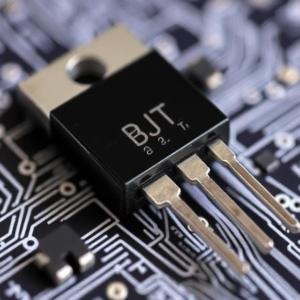Transistors are essential components in electronics, used for amplifying signals or acting as switches. There are different types of transistors, each with its unique properties and uses. Let’s break them down in a simple way:

Bipolar Junction Transistor (BJT):
Types:
NPN (Negative-Positive-Negative) and PNP (Positive-Negative-Positive)
How It Works:
In NPN, when a small current flows into the Base, it allows a larger current to flow from the Collector to the Emitter.
In PNP, the current flows the opposite way, and a small current at the Base allows current to flow from the Emitter to the Collector.
Uses:
Amplification: BJTs are great for amplifying weak signals (like in audio systems).
Switching: They are also used to switch devices on or off in digital circuits.
Field-Effect Transistor (FET):
A Field-Effect Transistor (FET) controls the flow of current using an electric field (hence the name). FETs have three main parts: Source, Gate, and Drain.
Types of FETs:
Junction FET (JFET): Uses the gate to control current flow between the source and drain.
Metal-Oxide-Semiconductor FET (MOSFET): Similar to JFETs but with an insulated gate that doesn’t allow current to flow directly into the gate, making it more efficient.
How It Works:
In a JFET, the gate creates an electric field that controls the flow of current between the source and drain.
In a MOSFET, the gate controls current by creating an electric field but has an insulated layer, meaning it doesn’t need current to flow into the gate.
Uses:
JFETs: Used in high-impedance circuits (like sensors and amplifiers).
MOSFETs: Most commonly used in digital circuits (like in computers and microchips), switching applications, and amplifiers because they are fast and efficient.
Insulated Gate Bipolar Transistor (IGBT) :
The IGBT combines the characteristics of MOSFETs (voltage control) and BJTs (current control). It’s widely used in power electronics.
How It Works: The IGBT has an insulated gate like a MOSFET, but it can handle high voltages and high currents, like a BJT.
Uses: Power control: Commonly used in applications like electric trains, motor drives, and power inverters (e.g., solar panels).
Phototransistor :
A phototransistor is a type of transistor that reacts to light instead of electrical current. It’s similar to a BJT but uses light to trigger the current.
How It Works:
Light hitting the Base generates charge carriers (electrons) and allows current to flow between the Collector and Emitter.
Uses: Optical sensors: Used in light-sensitive applications like remote controls, photoelectric sensors, and solar panels.











